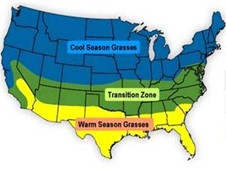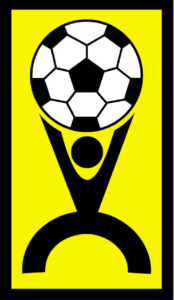Related Links
As we learned last week, we have cool and warm season grasses here at the Plex. While they can be slightly self-explanatory, let’s dive deeper into the root of the different types of grasses (Ha – roots)!
THE ZONES:
Turfgrass experts have split the United States into different zones: Cool-season zone, transition zone, and warm-season zon
e. Cool-season grasses grow best in the upper third of the United States, while warm-season grasses grow well in the lower third of the country. The middle third is known as the transition zone, which is where certain cool-season grasses and warm-season grasses grow well because the temperatures in the transition zone vary dramatically depending on the time of year.

COOL-SEASON GRASSES:
The cool-season grasses are grass types that grow best in temperatures between 60-75 degrees. Generally, the growing time for cool-season grass is the spring and early fall. Cool-season grasses can withstand harsh winters and moderate summers without being killed, making them an ideal option for many people in their lawns in this region.
There are several different types of cool-season grasses. Some of the most common are Kentucky Bluegrass, fescue, and ryegrass. We use them all here at the Plex!
WARM-SEASON GRASSES:
Warm-season grasses are grasses that thrive in warmer weather! These grasses prefer temperatures between 75-90 degrees. These grasses originated in tropical regions, which is why they thrive in the sun and high temperatures. Warm-season grasses will be green and grow in the heart of summer and once the temperature is consistently below 60 degrees, they will turn dormant and brown. They aren’t dead, it’s just a form of grass hibernation.
Much like the cool-season grasses, they are multiple warm-season grasses. Common ones for our region are Bermudagrass and zoysia grass. We have different types of bermudagrass here at the Plex.
WHAT ABOUT THE PLEX?
Maryland SoccerPlex is located in the transition zone where both cool-season types of grass can excel in the spring and fall, while the hot, dry summers are best for warm-season grasses. Neither grass type grows year-round so by having the different types of warm-season and cool-season grasses, we ensure we can have fields in the rotation that are thriving. Our Grounds and Environmental Crew also has begun overseeding cool-season fields with warm-season fields. This ensures that when we are hosting many events throughout the Summer, the fields will be growing and stronger and thus safer playing surfaces!
What is overseeding? Check back in 2 weeks as we discuss a number of turfgrass terms like overseeding!

